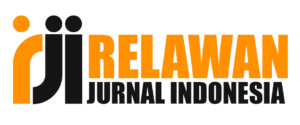The Prophet's Tale: Disseminating Religious Narratives and Values in Indonesian Children's Storybooks
Abstract
Keywords
Full Text:
PDFReferences
Ådna, G. M. (2014). The Reception of Islamic Prophet Stories within Muslim Communities in Norway and Germany. In I. Weismann, M. Sedgwick, & U. Mårtensson (Eds.), Islamic Myths and Memories (pp. 209–232). Routledge.
Alwi, Z., Akbar, A., Hady, A., Amir, A. M., Dakir, J., & Majid, L. A. (2021). The Anomaly of Good-Looking: The Relationship between Spirituality and Extremism on Hadith and Social Religious Perspective. QIJIS (Qudus International Journal of Islamic Studies), 9(2), Article 2. https://doi.org/10.21043/qijis.v9i2.10476
Arid, Z. (2014). The Creation of the prophet Adam (pbuh): How is this story presented for children. http://lup.lub.lu.se/student-papers/record/4623019
Bakhos, C. (2014). The Family of Abraham: Jewish, Christian, and Muslim Interpretations. Harvard University Press. https://doi.org/10.4159/harvard.9780674419940
Barli, T. R. (2022, September 21). Big Bad Wolf, Bersama Serigala Mewujudkan Impian Masa Kecil. tirto.id. https://tirto.id/big-bad-wolf-bersama-serigala-mewujudkan-impian-masa-kecil-gwn4
CIA. (2021). Religions—2021 World Factbook Archive. The World Factbook. https://www.cia.gov/the-world-factbook/about/archives/2021/field/religions/
Coser, L. A. (1975). Publishers as Gatekeepers of Ideas. The Annals of the American Academy of Political and Social Science, 421(1), 14–22. https://doi.org/10.1177/000271627542100103
Creegan Miller, T. D. (2020). “Kixinto’, k’u xa jub’iq’”: Negotiating K’iche’ Maya Orality, Self-Translation, and Cultural Agency in “Xalolilo lelele’” by Humberto Ak’abal. Revista de Estudios Hispánicos, 54(3), 653–677. https://doi.org/10.1353/rvs.2020.0075
Creswell, K. A. C. (1946). The Lawfulness of Painting in Early Islam. Ars Islamica, 11/12, 159–166.
Dalton, R. W. (2007). Perfect Prophets, Helpful Hippos, and Happy Endings: Noah and Jonah in Children’s Bible Storybooks in the United States. Religious Education, 102(3), 298–313. https://doi.org/10.1080/00344080701496272
Federspiel, H. M. (1993). The Usage of Traditions of the Prophet in Contemporary Indonesia (First Edition). Arizona State University Program for Southeast Asian Studies.
Geertz, C. (1959). The Javanese Kijaji: The Changing Role of a Cultural Broker. Comparative Studies in Society and History: An International Quarterly, 2(2), 228–249.
Greco, A. N., Milliot, J., & Wharton, R. M. (2013). The Book Publishing Industry. Routledge.
Hasan, N. (Ed.). (2018). Literatur Keislaman Generasi Milenial: Transmisi, Apropriasi, dan Kontestasi. UIN Sunan Kalijaga Press.
Hinderaker, E. (2002). Translation and Cultural Brokerage. In P. J. Deloria & N. Salisbury (Eds.), A Companion to American Indian History (pp. 357–375). Blackwell Publishers Ltd. https://doi.org/10.1002/9780470996461.ch21
Istianah, I., & Wahyuningsih, S. (2019). The Hadith Digitization in Millennial Era: A Study at Center for Hadith Studies, Indonesia. QIJIS (Qudus International Journal of Islamic Studies), 7(1), Article 1. https://doi.org/10.21043/qijis.v7i1.4900
Karakoz, O. (2020). The International Activity of the Ukrainian Book Publishing Industry. Culture and Arts in the Modern World, 0(21), 69–80. https://doi.org/10.31866/2410-1915.21.2020.208237
Khalidi, T. (2009). Images of Muhammad: Narratives of the Prophet in Islam Across the Centuries. Harmony Books.
Levenson, J. D. (2014). Inheriting Abraham: The Legacy of the Patriarch in Judaism, Christianity, and Islam. Princeton University Press.
Lyotard, J.-F. (1984). The Postmodern Condition: A Report on Knowledge (G. Bennington & B. Massumi, Trans.; 1st edition). University Of Minnesota Press.
McEntire, M. (2015). A Chorus of Prophetic Voices: Introducing the Prophetic Literature of Ancient Israel. Presbyterian Publishing Corp.
Mojopahit, H. (2022). Saat Tarekat Melawan Kapitalisme Global: Murabitun World Movement di Indonesia, 1999-2020. Socio Historica: Journal of Islamic Social History, 1(2), Article 2.
Nasir, M. S., & Teh, K. S. M. (2021). Elemen Nilai Dalam Teks Sastera Kisah Para Nabi Untuk Bacaan Kanak-kanak Menurut Perspektif al-Nadwi: Elements of Value in Literary Text of the Prophets’ Stories for Children’s Reading from al-Nadwi’s Perspectives. International Journal of Language Education and Applied Linguistics, 11(1), 14–26. https://doi.org/10.15282/ijleal.v11.6116
Nasuhi, H., Makruf, J., Umam, S., & Darmadi, D. (Eds.). (2018). Intoleransi dalam Buku Pendidikan Islam? Telaah Atas Isi dan Kebijakan Produksi. PPIM UIN Jakarta dan Prenada Media Group.
Peirce, C. S. (1991). Peirce on Signs: Writings on Semiotic. The University of North Carolina Press.
Rahim, H., & Rahiem, M. D. H. (2013). The Use of Stories as Moral Education for Young Children. International Journal of Social Science and Humanity, 2(6), 454–458. https://doi.org/10.7763/IJSSH.2012.V2.145
Richmond, V. B. (2014). Chivalric Stories as Children’s Literature: Edwardian Retellings in Words and Pictures. McFarland.
Robbins, L. S. (2007). Publishing American Values: The Franklin Book Programs as Cold War Cultural Diplomacy. Library Trends, 55(3), 638–650. https://doi.org/10.1353/lib.2007.0022
Ross, A. (2020). Challenging Metanarratives: The Past Lives in the Present. Archaeology in Oceania, 55(2), 65–71. https://doi.org/10.1002/arco.5196
Rumayshoo. (2009, August 1). Hukum Buku Bergambar untuk Anak-Anak. Tegar Di Atas Sunnah. https://ustadzaris.com/hukum-buku-bergambar-untuk-anak-anak
Ryabtsev, K. (2021). The AI-Based Judge: A New Threat to the Criminal Justice System? International Journal and Blog of Technology Law, 1(1).
Sahih Muslim 2108a—The Book of Clothes and Adornment—كتاب اللباس والزينة—Sunnah.com—Sayings and Teachings of Prophet Muhammad (صلى الله عليه و سلم). (n.d.). Retrieved August 5, 2023, from https://sunnah.com/muslim:2108a
Saussure, F. de. (2011). Course in General Linguistics. Columbia University Press.
Skavronskaya, L., Hadinejad, A. (Hana), & Cotterell, D. (2023). Reversing the Threat of Artificial Intelligence to Opportunity: A Discussion of Chatgpt in Tourism Education. Journal of Teaching in Travel & Tourism, 23(2), 253–258. https://doi.org/10.1080/15313220.2023.2196658
Stephens, J. (2009). Retelling stories across time and cultures. In M. O. Grenby & A. Immel (Eds.), The Cambridge companion to children’s literature (pp. 91–107). Cambridge University Press (CUP). https://doi.org/10.1017/CCOL9780521868198.006
Stephens, J., & McCallum, R. (1998). Retelling Stories, Framing Culture: Traditional Story and Metanarratives in Children’s Literature. Routledge. https://doi.org/10.4324/9780203357750
Stütz, S., Berding, F., Reincke, S., & Scheper, L. (2022). Characteristics of learning tasks in accounting textbooks: An AI assisted analysis. Empirical Research in Vocational Education and Training, 14(1), 10. https://doi.org/10.1186/s40461-022-00138-2
Todorov, T. (1986). Symbolism and Interpretation. Cornell University Press.
Tottoli, R. (2002). Biblical Prophets in the Qur’ān and Muslim Literature. Routledge.
Troxel, R. L. (2011). Prophetic Literature: From Oracles to Books. John Wiley & Sons.
Turbanti, G. (2022). The Semiotic Approach. In G. Turbanti (Ed.), Philosophy of Communication (pp. 19–29). Springer International Publishing. https://doi.org/10.1007/978-3-031-12463-1_2
Widdowson, H. G. (2008). Text, Context, Pretext: Critical Issues in Discourse Analysis. John Wiley & Sons.
Wilandra, S. S., & Emalia, I. (2022). Sarekat Islam sebagai Gerakan Sosial: Dari Gerakan Ratu Adil ke Sosialisme Islam. Socio Historica: Journal of Islamic Social History, 1(1), Article 1.
Yakin, H. S. Mohd., & Totu, A. (2014). The Semiotic Perspectives of Peirce and Saussure: A Brief Comparative Study. Procedia - Social and Behavioral Sciences, 155, 4–8. https://doi.org/10.1016/j.sbspro.2014.10.247
Yumnah, S. (2022). The Role of Parents on the Forming of Children’s Children in the Family: The Thematic Hadith Study. LISAN AL-HAL: Jurnal Pengembangan Pemikiran Dan Kebudayaan, 16(2), 193–202. https://doi.org/10.35316/lisanalhal.v16i2.193-202
DOI: http://dx.doi.org/10.30813/s:jk.v18i1.5455
Refbacks
- There are currently no refbacks.
Copyright (c) 2024 Endi Aulia Garadian, Saiful Umam

This work is licensed under a Creative Commons Attribution-ShareAlike 4.0 International License.
Publisher
Editorial Board SEMIOTIKA: Jurnal Komunikasi
Department of Communication
Faculty of Social Science and Humanities
"UNIVERSITAS BUNDA MULIA"
Lodan Raya St No.2, North Jakarta 14430
Phone: +62 21 692 9090 ext. 348
Email: SEMIOTIKA@ubm.ac.id













